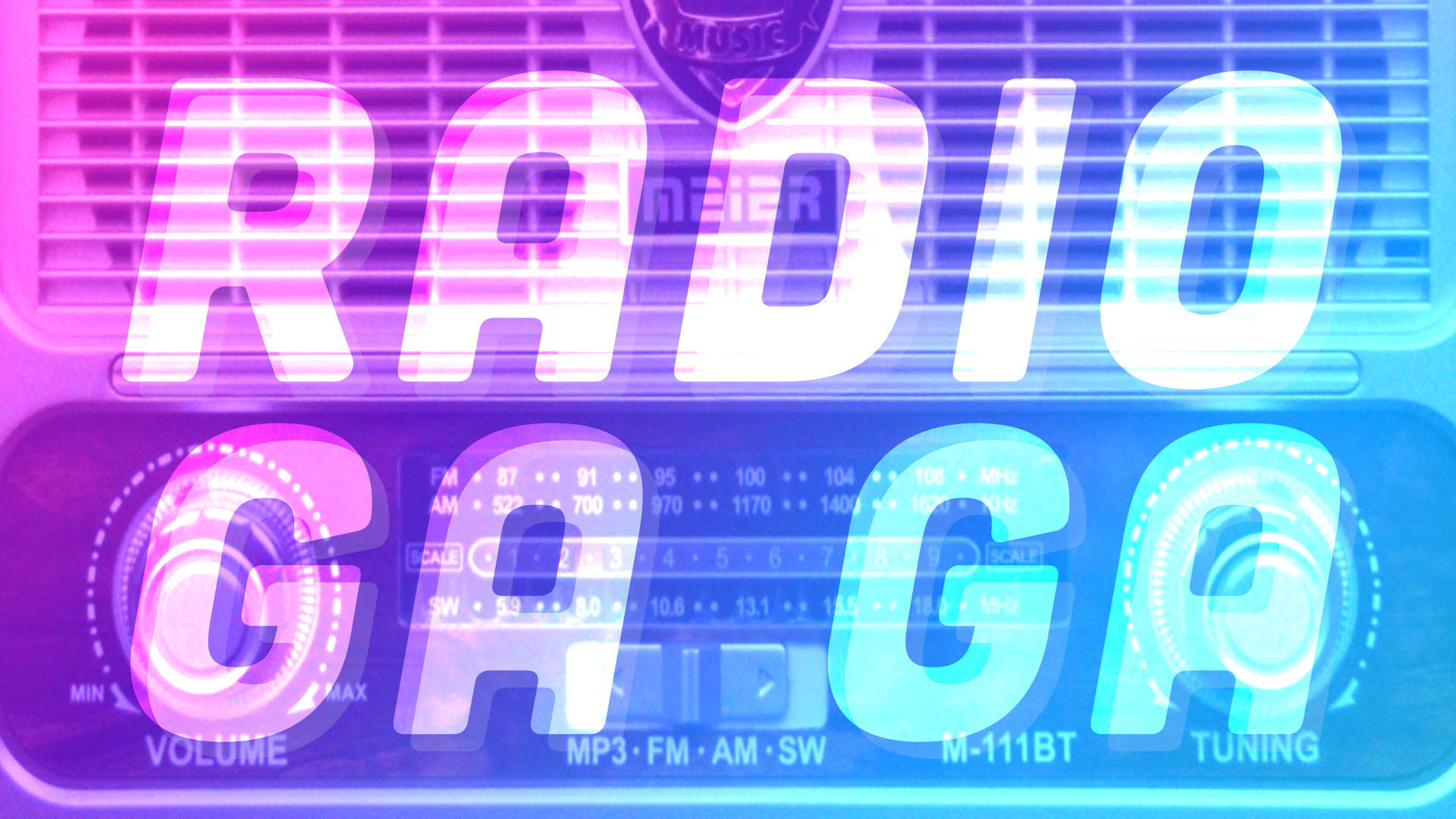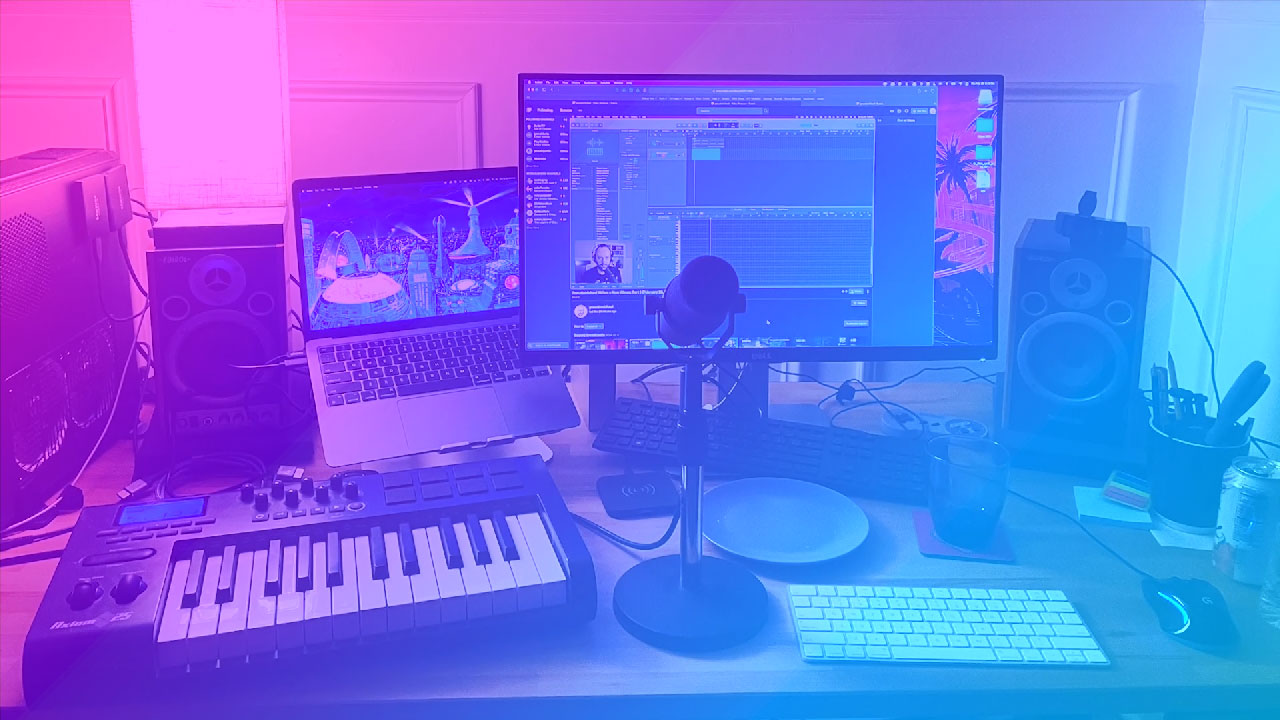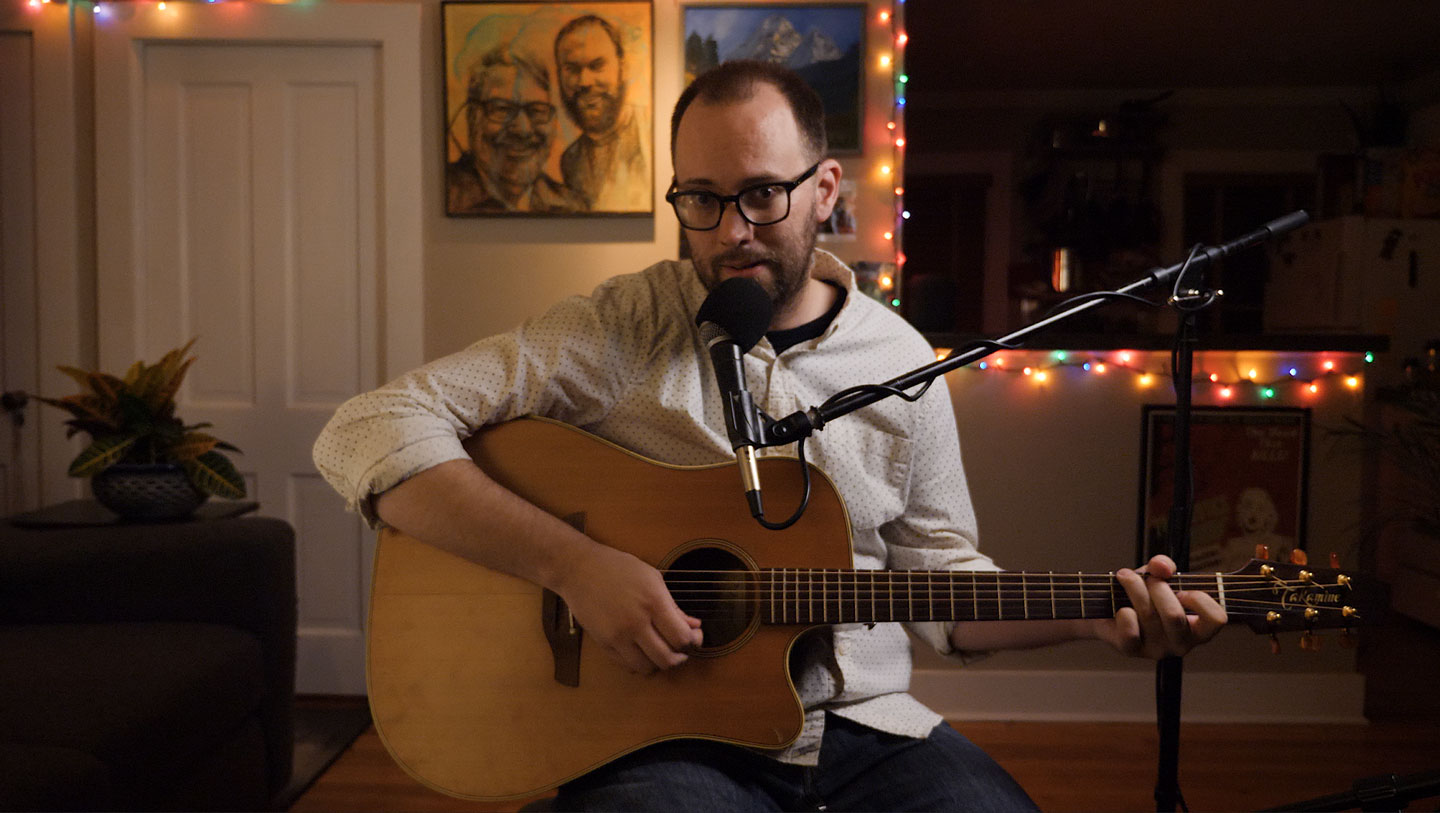Last month, Nintendo released Metroid: Samus Returns for the 3DS. It’s a remake of 1991’s Metroid 2: Return of Samus for the original Game Boy.
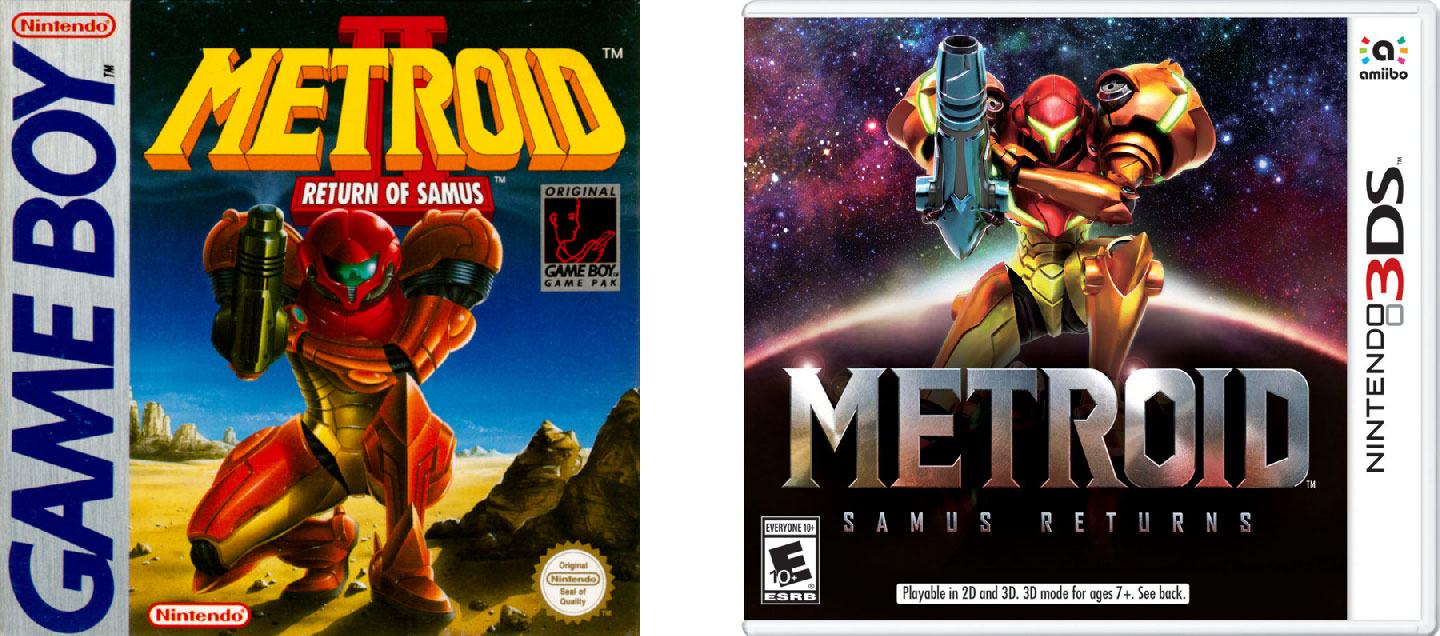 I prefer the original box art
I prefer the original box art
Samus Returns is not the first remake of Metroid II. Milton Guasti released a well regarded unofficial fan remake called AM2R (Another Metroid 2 Remake)1.
Before I dish out the goods on Nintendo’s 3DS remake, let’s take a trip down memory lane and examine some similarly ambitious, ill-fated sequels from the time period. This will help contextualize the original Metroid II and highlight how the 3DS remake greatly improves on it in almost every way.
Troubled Sequels In Gaming History
For most of gaming’s best franchises, you can identify a certain game marked by growing pains. These entries often garner significant attention when they are released for trying new things, but when we take our nostalgia goggles off decades later, we can see that they don’t hold up as well as their classic brethren.
Simon’s Quest fits the bill here in the Castlevania series, with its inclusion of day and night cycles, open-ended exploration of towns and castles, and a wide variety of items to acquire. For all its innovative swagger, though, the game is a complete mess, forcing you to grind for hearts, ponder at cryptic puzzles2, and navigate unforgiving environments filled with false floors and infuriating enemies.
To top it all off, the game has almost zero memorable boss fights. It simply pales in comparison to the original Castlevania3.
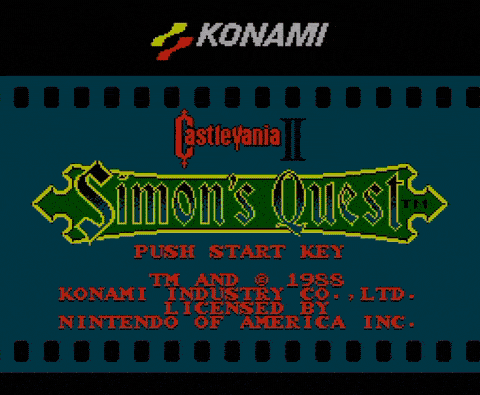 Two Troubled Sequels
Two Troubled Sequels
In many of the same ways, Zelda II: The Adventure of Link tries a lot of new things, with RPG elements like a vast overworld, experience points to upgrade Link’s stats, and fun new sword and magic abilities. It’s got a great soundtrack and jump-slashing darknuts feels good.
But once again, for all its zeal to expand the Zelda formula, Zelda II is just not as fun to play as other Zelda games. It’s rife with poorly balanced gameplay, overly difficult enemies, and far too many obscure puzzles that practically demand you fire up GameFaqs to complete. The world map is bewildering and it’s hard to figure out what to do or where to go.
Zelda II is probably the most flawed 1st party Zelda game Nintendo has ever made4.
The original Metroid II
So, in light of these other flawed sequels, how does 1991’s Metroid II: Return of Samus hold up?
Pretty good! There’s still some rough edges here, but Metroid II is a solid entry in the series. It added the ability to save your progress (no Justin Bailey passwords here), and introduced some clever power-ups that are now staples of the series (Spring Ball, Space Jump, Spazer and Plasma weapons).
It’s spooky sci-fi the way Metroid should be. Samus is alone and tasked with hunting down metroids on the planet SR388. The game’s got a great soundtrack and responsive controls, and the difficulty level is not nearly as extreme as Simon’s Quest or Zelda II, so you won’t find yourself reaching for the Game Genie codes just to get through it.
This game sharpened a lot of the rough edges of the original Metroid which, while an innovative game in its own right, proves to be almost as frustrating as the aforementioned games. If I’m looking at playing an old Metroid game, I’d take Metroid II over the original any day.
 Metroid II is not so bad
Metroid II is not so bad
Metroid II still suffers from a few minor flaws, though. Instead of gating player advancement by teasing future abilities (a crucial ingredient in the metroidvania formula), you’re just blocked by a pool of poison that doesn’t drain until you’ve exterminated every single metroid in the area. You’ll know you’ve finished off an area’s metroids because the whole screen will start quaking, which will send you backtracking to the last poison pools you saw to advance deeper into the planet.
While the game gives you awesome new powers, it rarely lets you feel the full satisfaction of using them. Almost immediately after giving you the High Jump Boots, you’ll find Space Jump, rendering the former kind of pointless. Similarly, soon after you find Wave or Spazer, you’ll replace it with Plasma5. The relationship between abilities and the challenges you face in the game don’t feel tuned to each other nearly as much as later Metroid games. It’s like great I’ve got this new weapon, but is there anything to use it on?
Finding each area’s metroids is annoying, to say the least. The game has no map and zero indication that you are near a metroid aside from an empty metroid shell left in the general vicinity.
Your view is also severely restricted by the Game Boy’s low resolution. The monochrome graphics and sparse backgrounds mean that it’s easy to get lost. Even if you’re using a map you found online, you’ll be cross-referencing your location constantly just to keep track of it.
The metroids do evolve throughout the game, becoming larger and more difficult, but this doesn’t change the combat enough to be all that interesting.

They are all basically missile sponges and as long as you keep finding energy tank upgrades, they don’t ever pose too much trouble. Aside from the Queen Metroid final boss, and Arachnus, who protects the Spring Ball upgrade, the various metroids serve as the only real “boss fights” in this game.
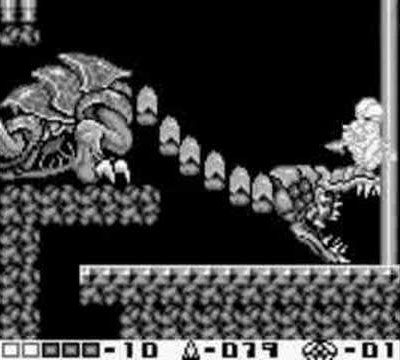 The Queen is one of the only real bosses in the game
The Queen is one of the only real bosses in the game
By the end of the game, despite all of the powerups and areas to explore, the game feels kind of hollow. It needs more tuning to make the player advancement and empowerment as satisfying as in later Metroid games, particularly Super Metroid.
Metroid II is mildly enjoyable and not nearly as annoying to play as the aforementioned sequels, but it’s far from the best in the series.
The Remake
So, Metroid II wasn’t all that bad… Metroid: Samus Returns is phenomenal.
It respects the spirit of Metroid II while fixing almost every one of its shortcomings, elevating it to a fully baked Metroid experience. The game is deeply challenging, but in ways that are almost always fair. When you beat a new metroid mutation or a boss fight, or finally acquire a long-desired suit upgrade, you’ll feel that old gaming drug we (don’t actually) call metroidvania coursing through your veins.
About That Art Style
One of the first things you’ll notice about the new game is the “2.5D” polygonal graphics. For those unfamiliar with this terminology, it describes games with 3D polygonal graphics, but that play in a side, two-dimensional view.
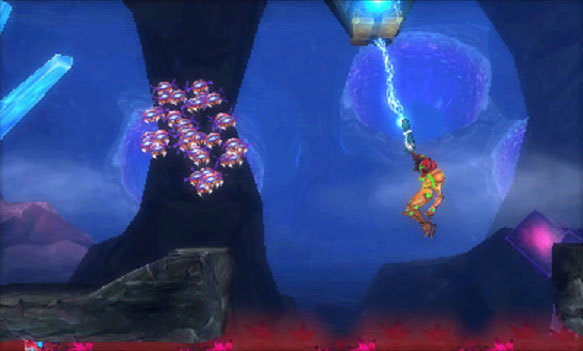 At first I was concerned about the polygonal graphics
At first I was concerned about the polygonal graphics
Certain friends of mine have grown to dislike this art style, citing games like New Super Mario Bros. for its comparatively loose controls. I will admit to a similar bias for pixel graphics in side scrolling games, and while I still enjoyed the “New” Mario games, they aren’t nearly as great as Mario 3 or Super Mario World.
So where does that leave Samus Returns since it embraces this style?
At first, I was missing pixel art Metroid. Samus moves very fast in this game and I slipped off a few edges accidentally from time to time. It’s a slightly different feel, one that invites you to move quickly and chain attacks against enemies with the new melee strike (more on this later).
If you’ve ever played a Smash Bros. game, there is something a little similar in how Samus dashes forward in this game. It took awhile to get used to it. Once I did, it was smooth sailing.
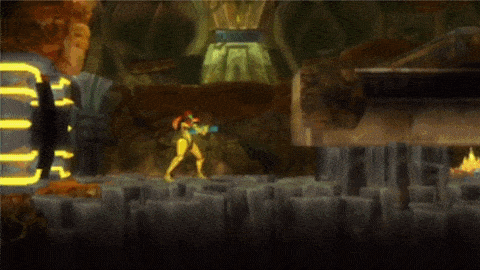 Morph Ball acquired
Morph Ball acquired
There are benefits to this graphical style, and I grew convinced it was chosen for gameplay reasons and not just aesthetic ones. The fluidity allows for full 360 degree aiming, and a “camera” that can zoom out for boss fights in large rooms. This wasn’t just an enhancement to the feeling of grandeur or scale, it allowed the game designers to program fast moving and swooping metroids without unfairly handicapping the player with a tight cropped view of the action. And bigger environments allow Samus to fully express many of the power ups.
While it could be possible to design high resolution sprites that work in a similar way, in the end I came to an appreciation of many of the pros of this graphical approach.
It’s hard to explain with words, but once you master the melee attack and overall high speed of Samus, the game has a satisfying rhythm to the gameplay as you zip through rooms. Going back to the original Metroid II feels archaic and slow.
Gameplay
The most significant new gameplay mechanic in this game is the melee counter attack, and mastering it will be critical to your success. It actually reminds me a little of Punch Out. Each enemy has a “tell” with a spark and a sound that warns you they’re about to dash. If you time your melee just right, you’ll stun them and be able to perform a one shot kill.
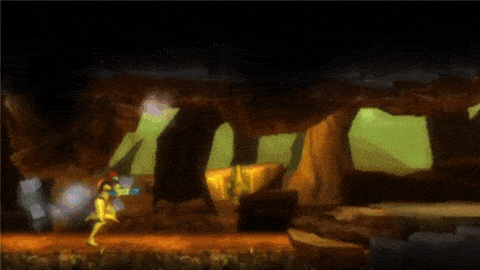 The melee attack game mechanic is really satisfying
The melee attack game mechanic is really satisfying
The game even helpfully auto-aims at the enemy after a successful stun.
The game builds on this mechanic by incorporating it into the metroid encounters and a few of the boss fights. Where Metroid II’s powers felt underutilized, this game gives you a ton of chances.
The melee attack has an interesting effect on the game design. Nintendo has made most of the enemies in this game harder, which balances out your ability to stun and kill many of them in one hit . The result is a tight challenging game mechanic that rewards your mastery. Enemies can kill you faster here than in most Metroid games. Even late in the game, when you have several energy tanks, a couple of bad encounters will drain them fast.
You’ll die more in this game than most other Metroid games, if you’re not careful. But that death rarely feels cheap. You have all the tools you need, and the enemies clue you into their attacks. You’ll probably be nodding your head at the game “Yep, I deserved that.”
Don’t get me wrong, this game isn’t Dark Souls or anything. It’s just a notch up in difficulty from Nintendo’s usual hand-holding ease. I consider this a welcome change! If you finish the game and you’re still hungry for a bigger challenge, it unlocks a hard mode.
Most of the time when we complain about games being difficult, it’s when they’re unfairly difficult. I never felt that way with Samus Returns.
Gating Your Progress
I complained about the arbitrary progress gate of poison pools in Metroid II. They’re still here, but it feels de-emphasized now.
They still block you, but within each area the level design is made to invite the use of your abilities, and tempt you for the ones you don’t have yet. The poison is really just there to remind you to find the remaining metroids. In Metroid II they felt kind of lazy, but this game does not.
Thank goodness this game includes a map! And it’s a good one. It automatically marks itself so you know where you saw a locked door or an out of reach item. It leaves an open circle for items you failed to collect, and fills in a dot when you’ve collected. This combined with fast travel warping makes backtracking in this game to collect upgrades a breeze.
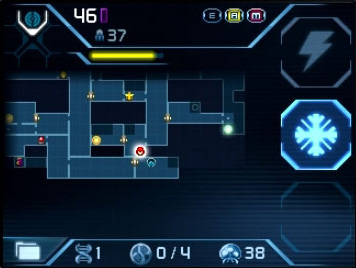 The map is a godsend in this game
The map is a godsend in this game
Metroid’s legacy is showing you a thing you can’t reach with your current abilities, whether it’s a jump too far, a path you can’t run across fast enough, or water slowing you down. This drives the player desire to explore. Then, once you acquire that new ability, you start remembering all those spots earlier in the game that you couldn’t reach the goodies.
Get ready to feel that way constantly in this game. It’s glorious.
The Enemies
If the original Metroid II suffered from a lack of boss fights, this games flips that on its head for a newfound abundance. The metroid encounters are phenomenal, and there are also several non-metroid boss fights that will test all of your abilities. I won’t spoil how some of them are defeated because that discovery is something you should experience on your own!
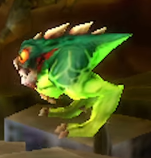 Get ready for a lot of palette swapped repeat enemies
Get ready for a lot of palette swapped repeat enemies
The regular enemies, though, suffer from a bit of palette swapping as you advance in the game. You’ll see 3 or 4 “versions” of each enemy with a new colored skin later in the game. This is one of the only things that feels a bit lazy in this game.
The evolution of the metroids is much more interesting this time. Instead of merely becoming missile sponges, they have dramatically different attack patterns. And even when you’ve seen a certain type before, it may take on an elemental attribute in other fights, like setting your platform on fire.
Since the entire point of Samus’ mission in this game is to exterminate the metroid threat, it’s a good thing Nintendo spent the time to make these encounters varied and challenging.
Conclusion
If you’ve ever enjoyed a metroidvania game, you owe it to yourself to play through this game. The fluidity of the action, the satisfaction of mastering the melee attack, the epic battles with challenging metroids, and the boss fights I’ve deliberately refrained from describing… all of it adds up to a return to form for Metroid games.
Color me one happy gamer!
Footnotes
-
I’ve yet to play AM2R, but when I do, maybe I’ll add a section to this review! ↩
-
Did YOU figure out the tornado!? ↩
-
Egoraptor diagnosed the problems with Simon’s Quest with great insight on Sequelitis. ↩
-
Let’s not speak of the Philips CD-i games… ↩
-
The beam weapons don’t stack the way they do in Super Metroid. ↩



